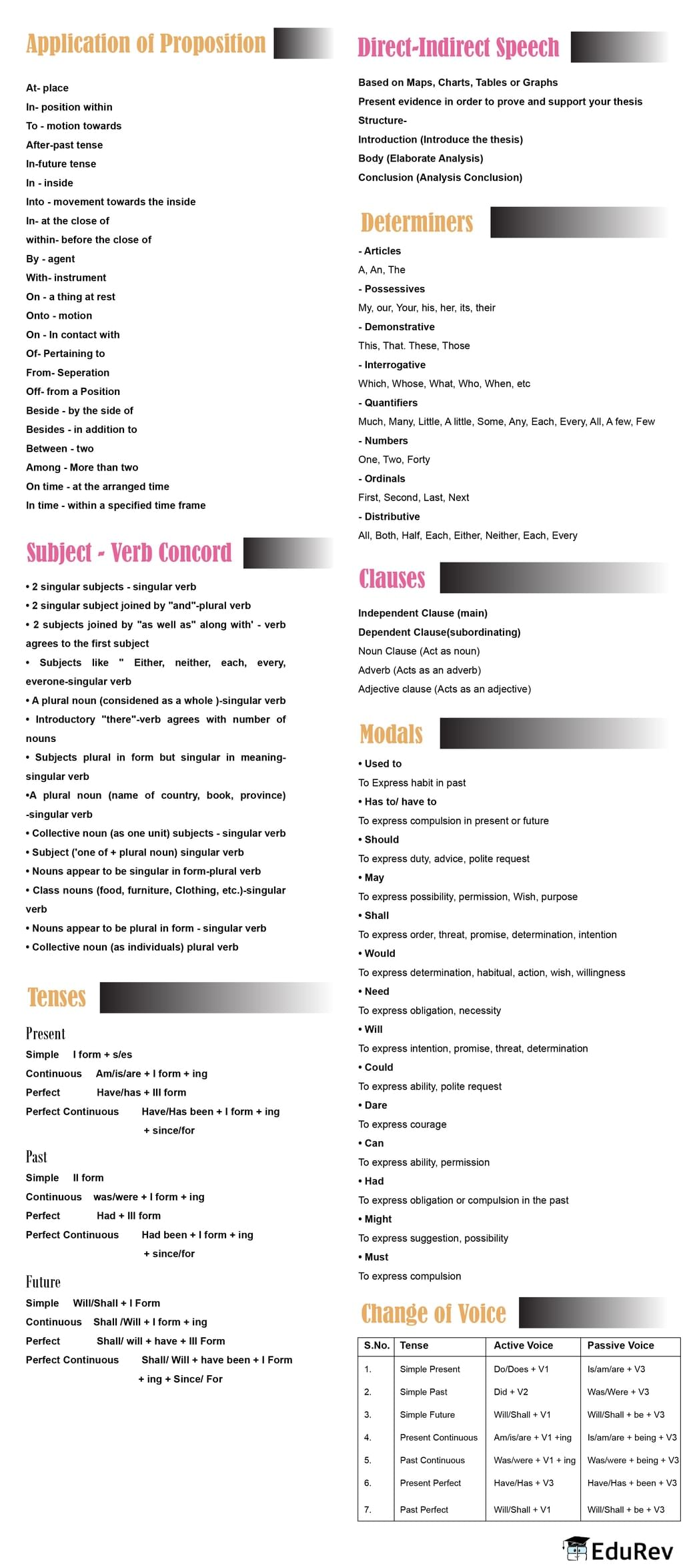Class 10 Exam > Class 10 Notes > Subject-Wise Mind Maps for Class 10 > Mind Map: English Grammar
Mind Map: English Grammar | Subject-Wise Mind Maps for Class 10 PDF Download

The document Mind Map: English Grammar | Subject-Wise Mind Maps for Class 10 is a part of the Class 10 Course Subject-Wise Mind Maps for Class 10.
All you need of Class 10 at this link: Class 10
FAQs on Mind Map: English Grammar - Subject-Wise Mind Maps for Class 10
| 1. What is the difference between a subject and an object in English grammar? |  |
Ans. In English grammar, a subject is the noun or pronoun that performs the action of the verb in a sentence, while an object is the noun or pronoun that receives the action of the verb. In simple terms, the subject is the "doer" of the action, and the object is the "receiver" of the action.
| 2. How do I identify the subject and verb in a sentence? |  |
Ans. To identify the subject and verb in a sentence, first find the verb by asking "What is happening?" or "What is the action?" Then, ask "Who or what is doing the action?" The answer to this question is the subject of the sentence. The verb and subject are the most important elements in forming a sentence.
| 3. What are the different types of pronouns in English grammar? |  |
Ans. Pronouns are words that are used in place of nouns. There are several types of pronouns in English grammar, including personal pronouns (e.g., I, you, he, she, it), possessive pronouns (e.g., mine, yours, his, hers, its), demonstrative pronouns (e.g., this, that, these, those), reflexive pronouns (e.g., myself, yourself, himself, herself), and relative pronouns (e.g., who, whom, whose, which, that).
| 4. What is the difference between a transitive and intransitive verb? |  |
Ans. A transitive verb is a verb that requires a direct object to complete its meaning, while an intransitive verb does not require a direct object. In other words, a transitive verb transfers the action to something or someone else, whereas an intransitive verb does not transfer the action.
| 5. How do I use punctuation marks correctly in English grammar? |  |
Ans. Punctuation marks play a crucial role in conveying the intended meaning and structure of a sentence. Some common punctuation marks include the period (.), comma (,), question mark (?), exclamation mark (!), colon (:), semicolon (;), and quotation marks (""). To use them correctly, it is important to understand their specific rules and purposes. For example, a period is used to end a sentence, a comma is used to separate items in a list or clauses in a sentence, and a question mark is used at the end of a direct question. Learning and practicing the correct usage of punctuation marks is essential for effective communication in English.
Related Searches
















